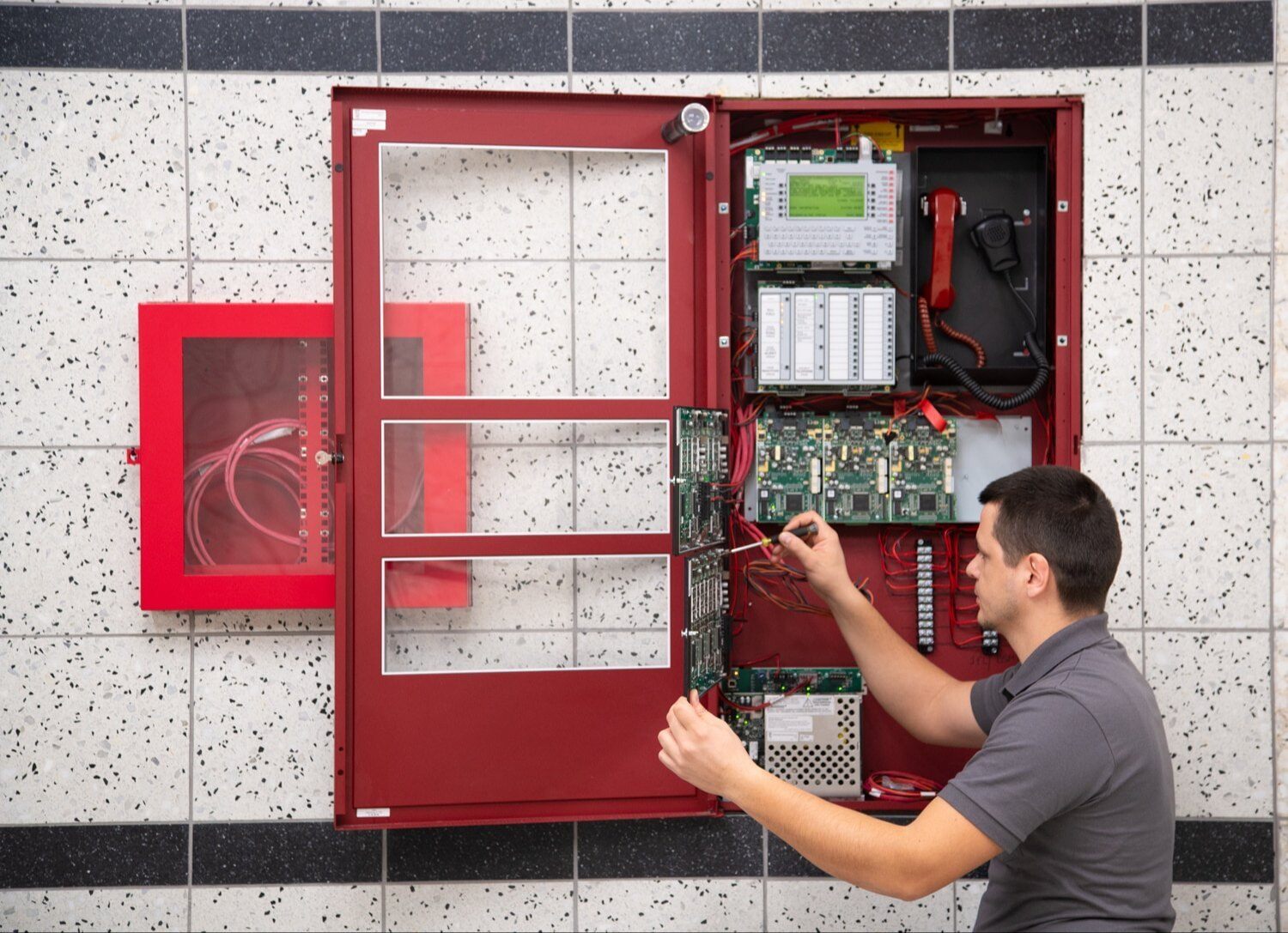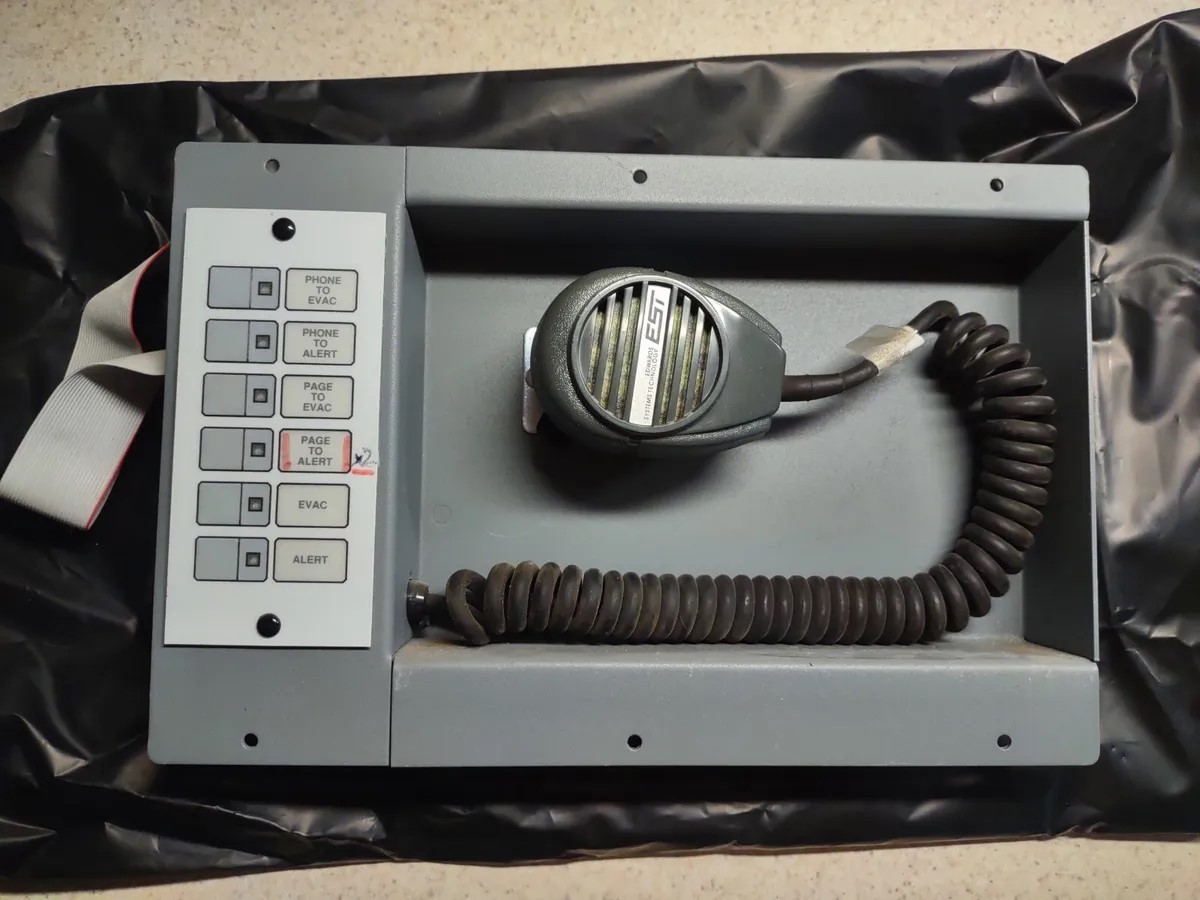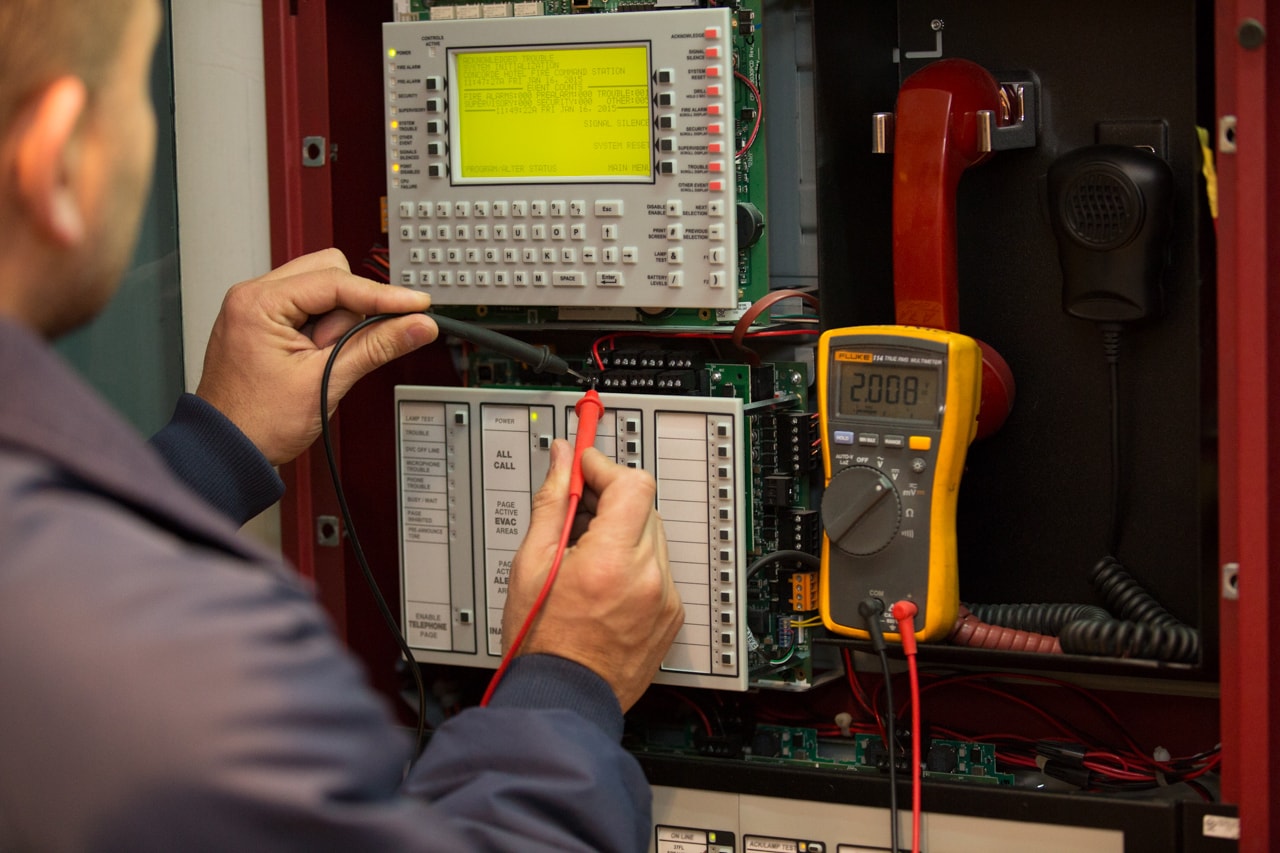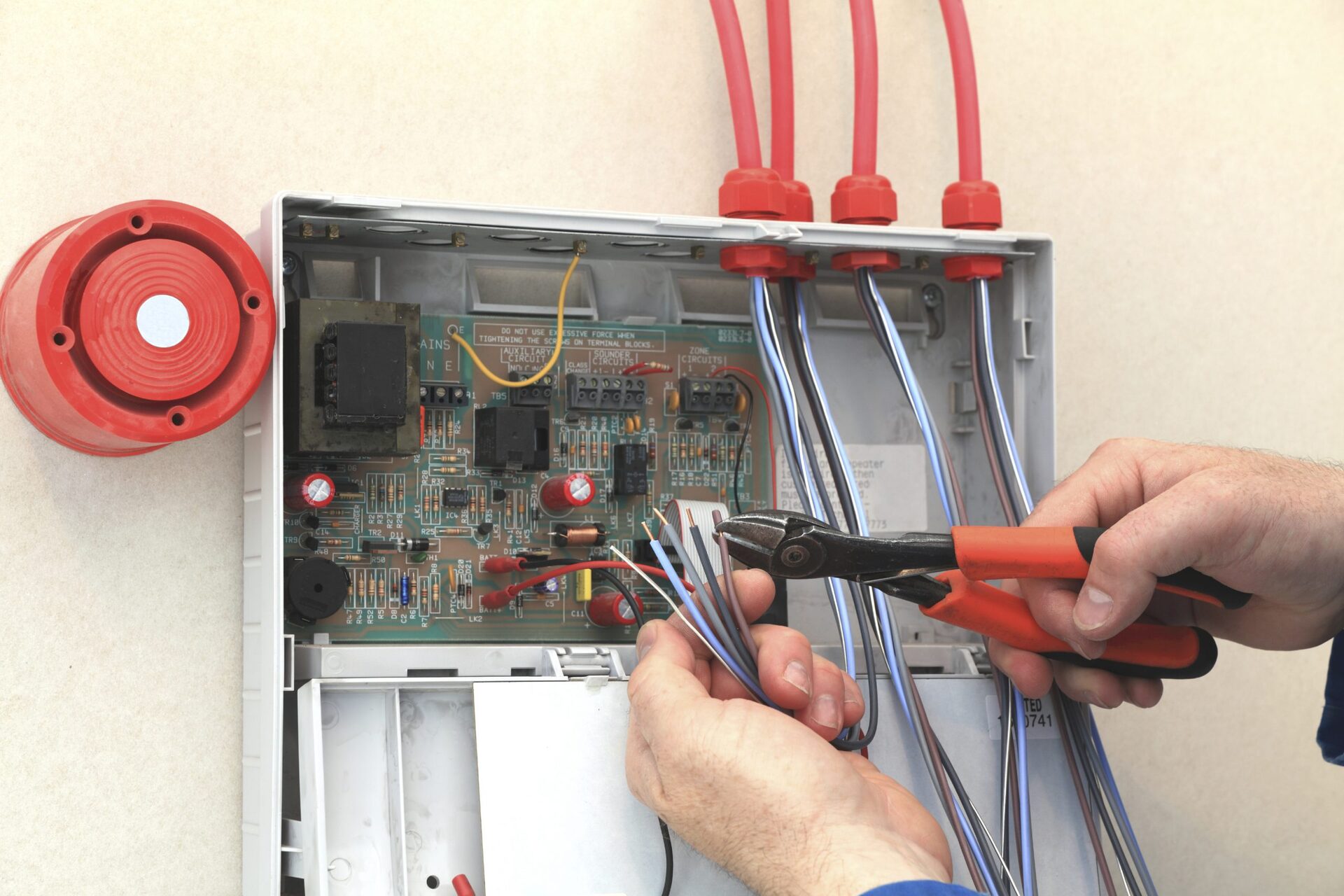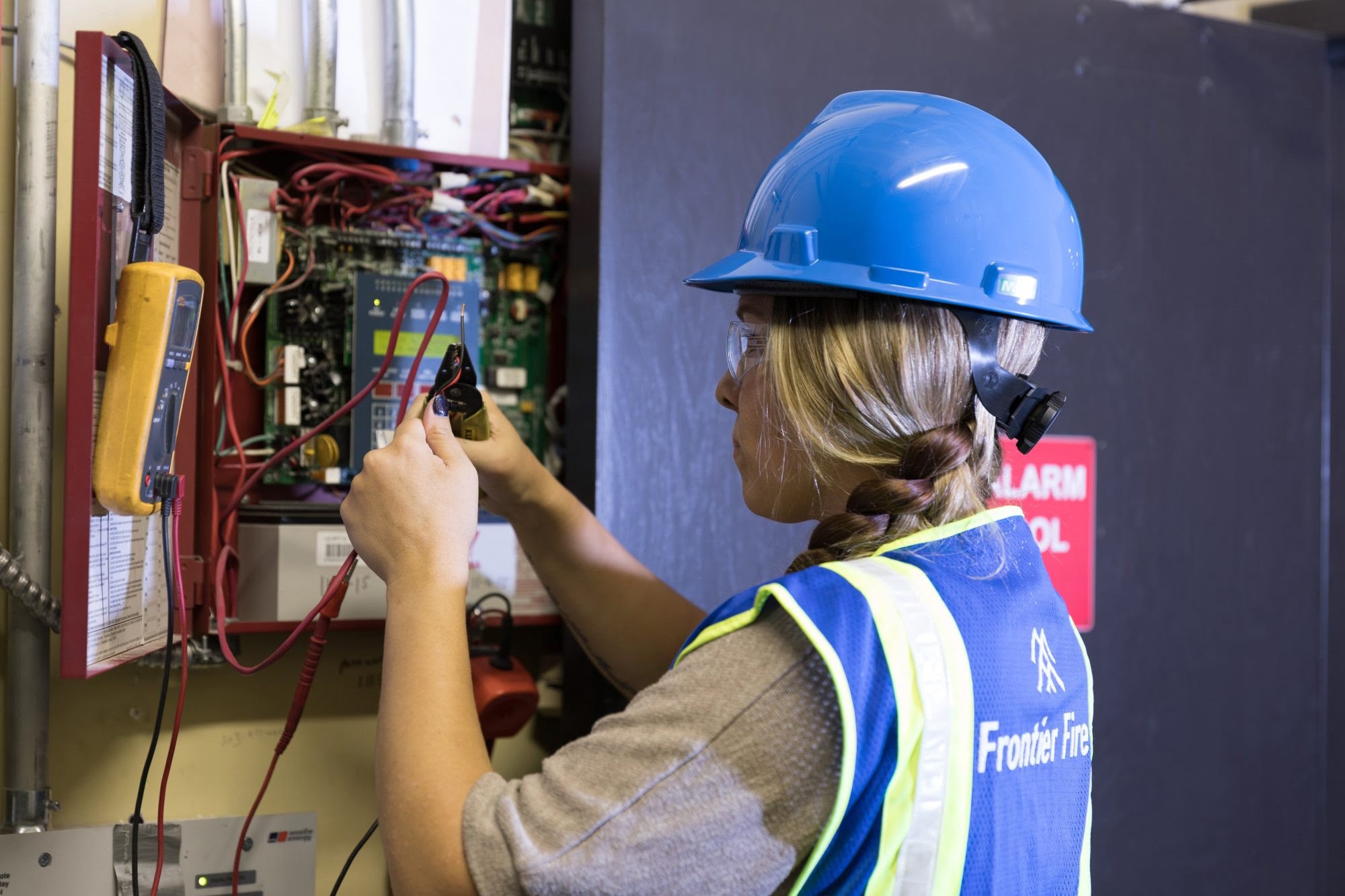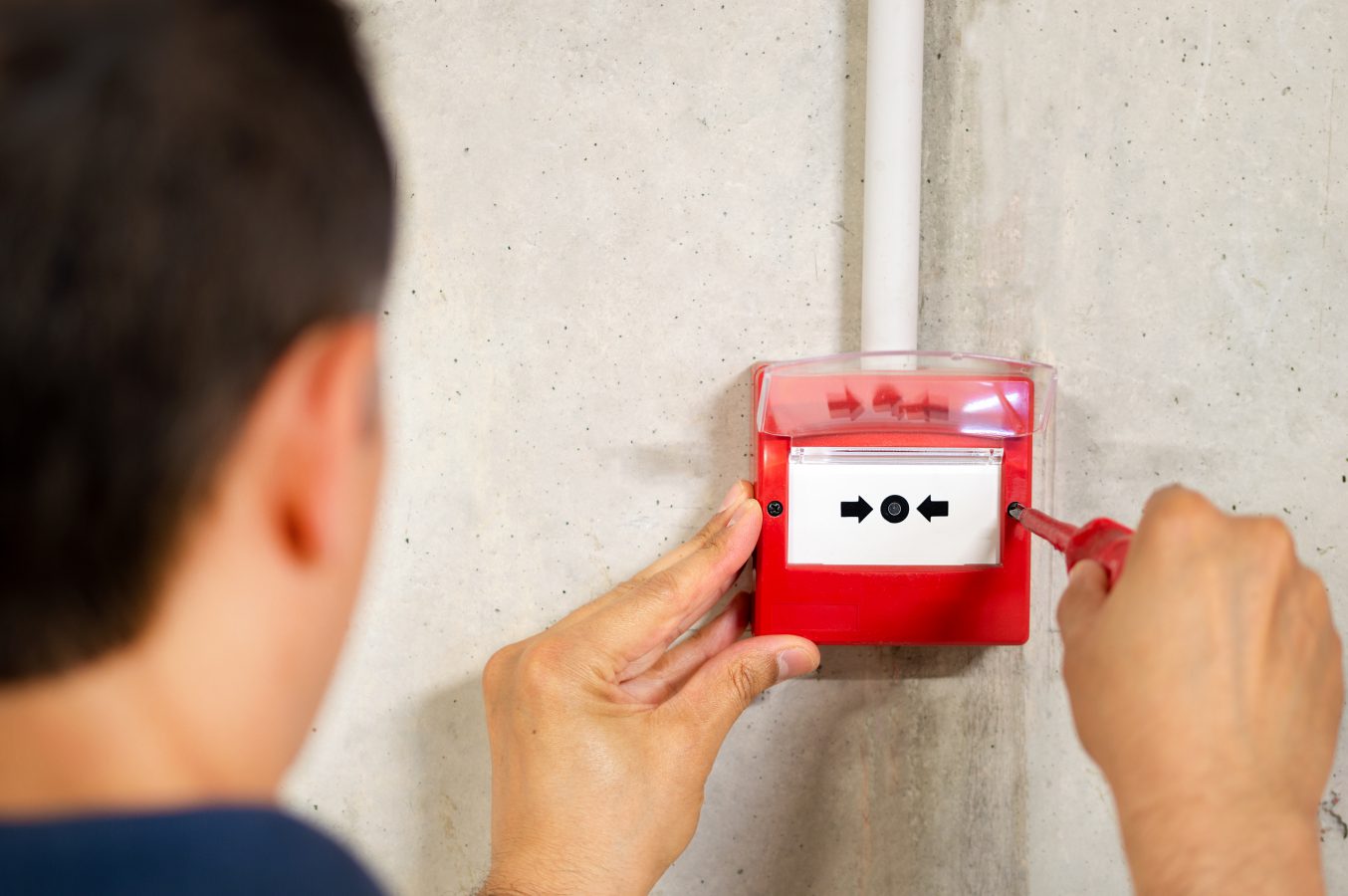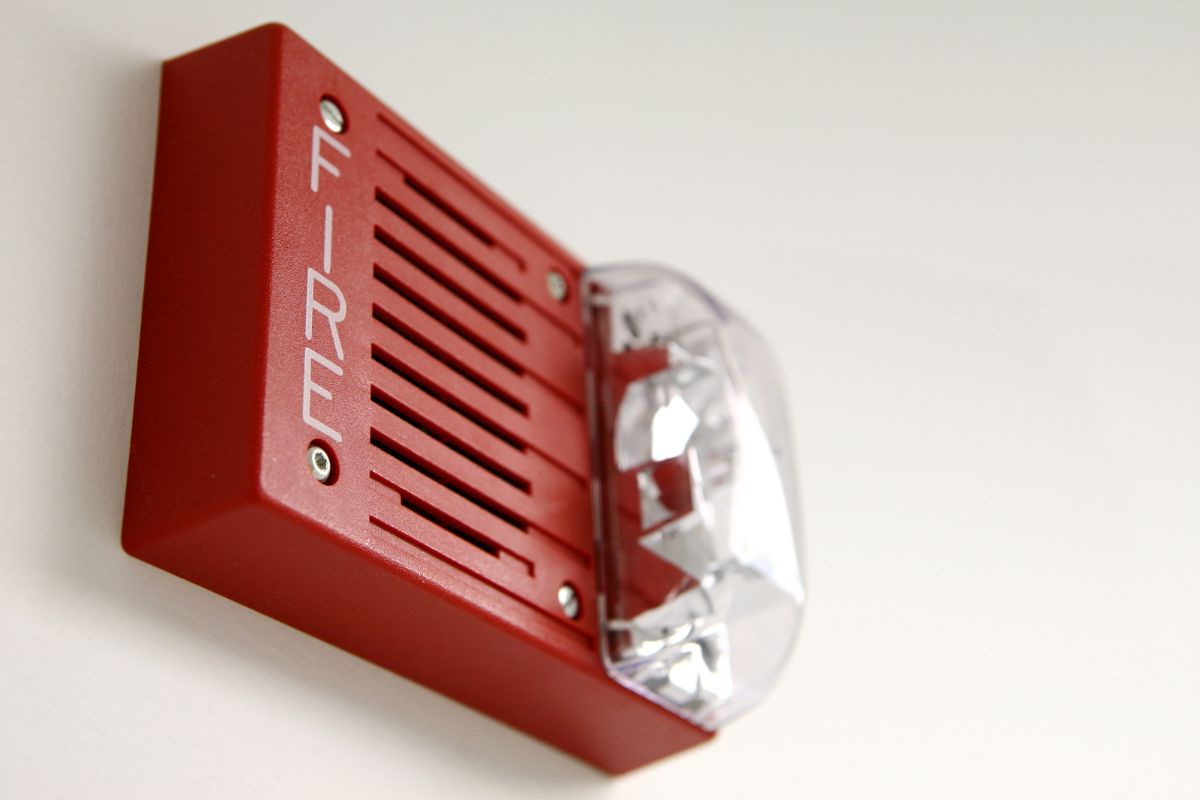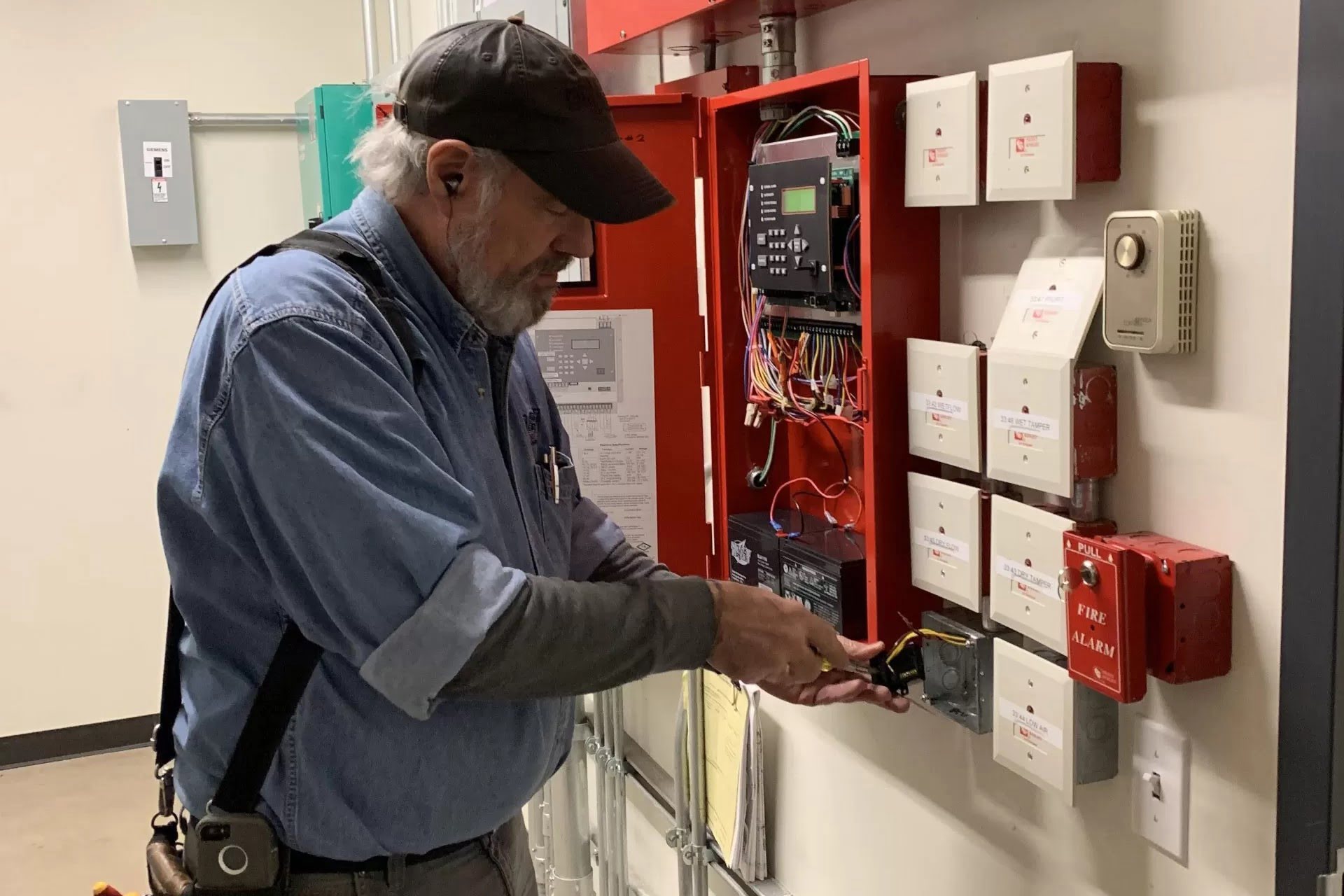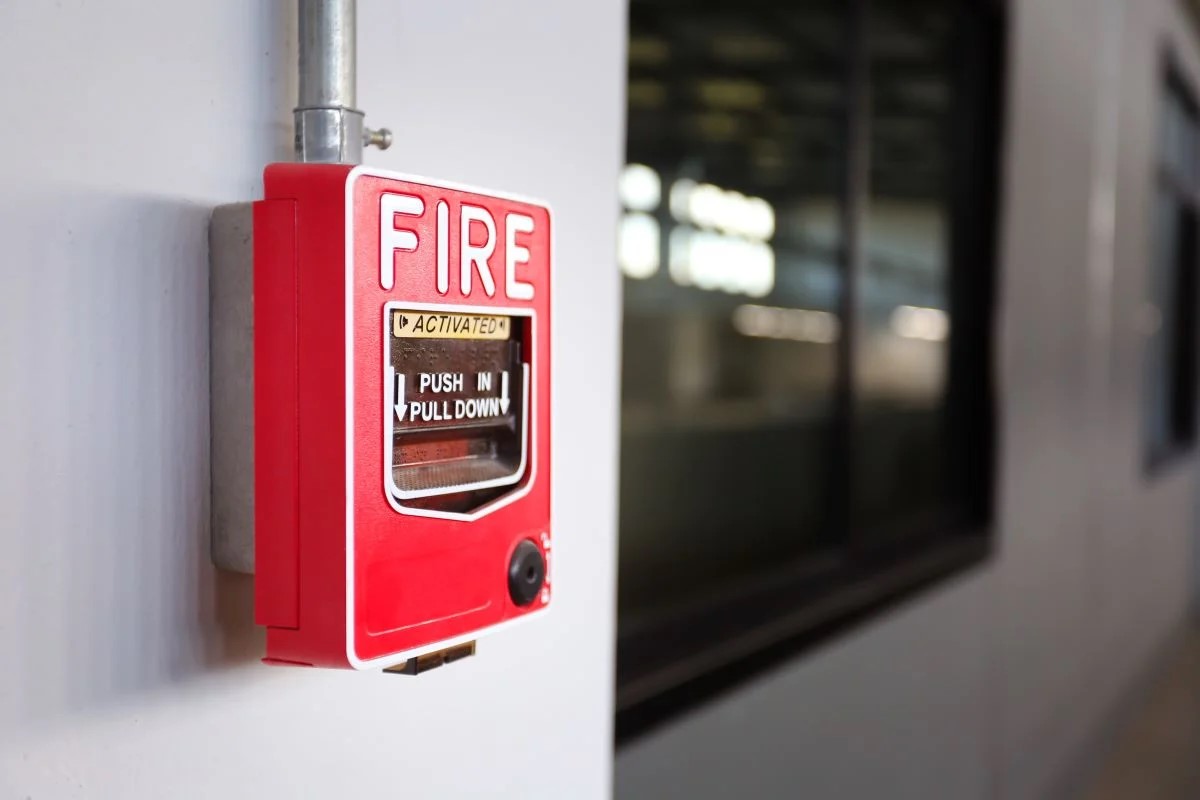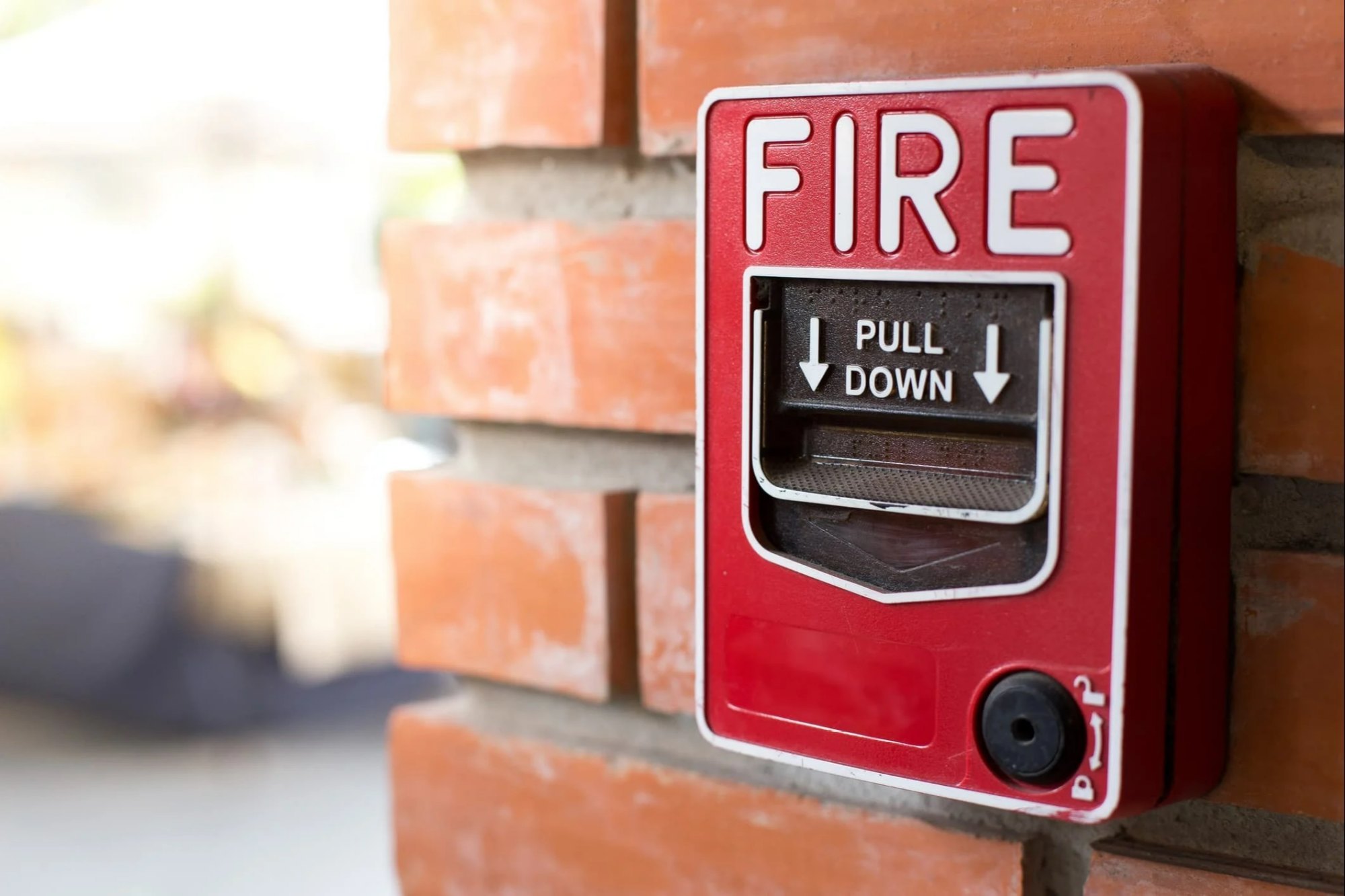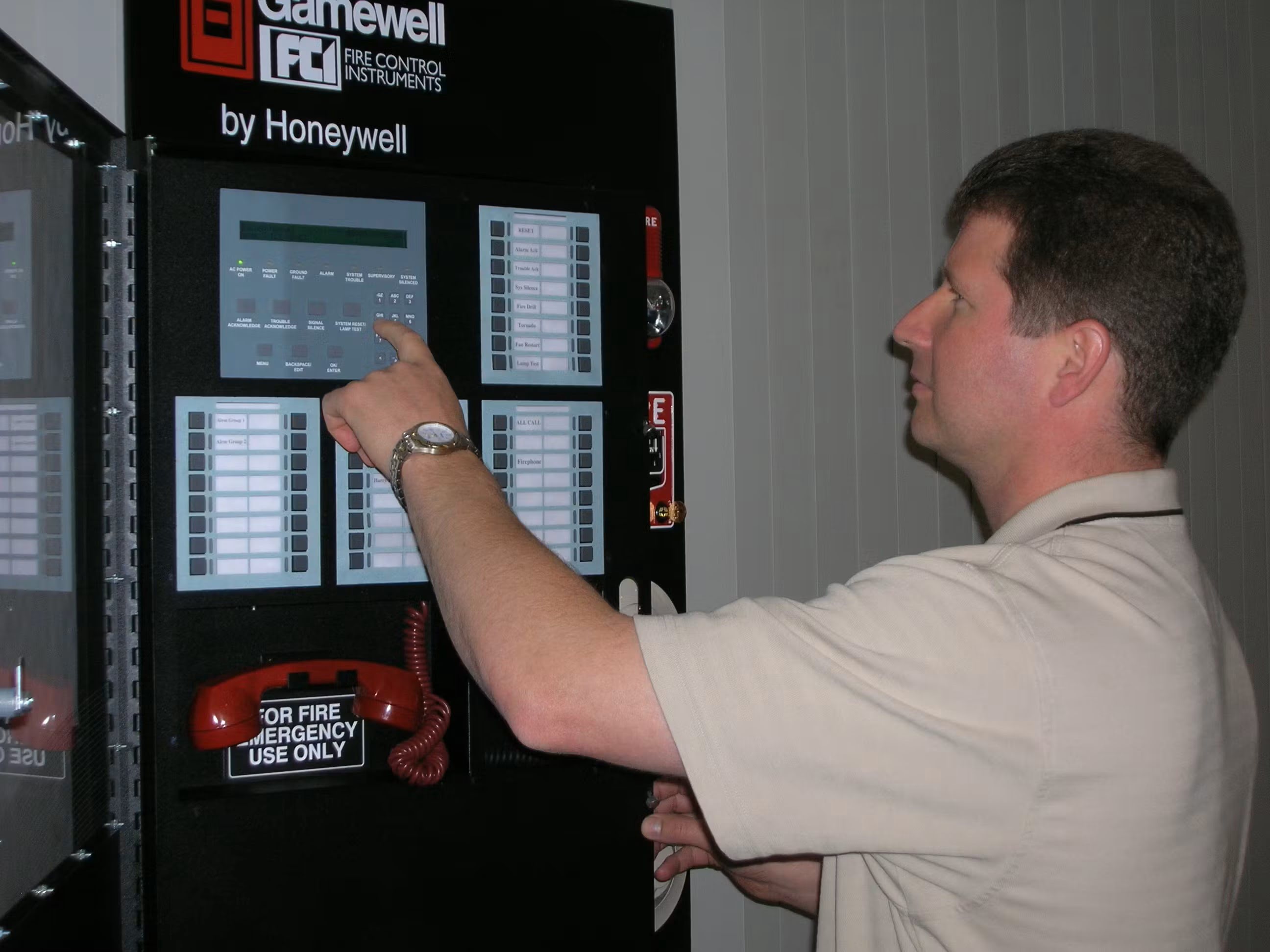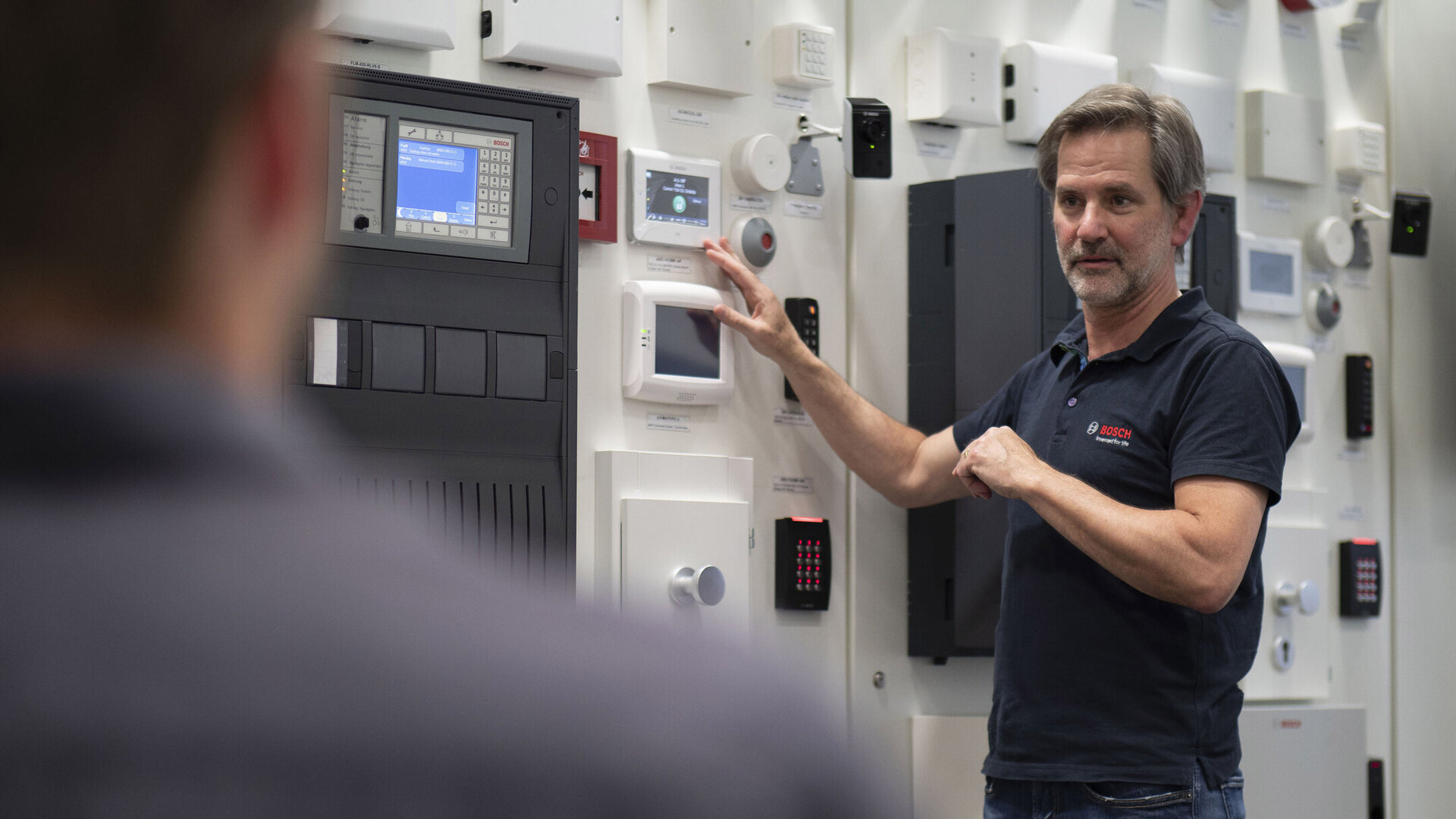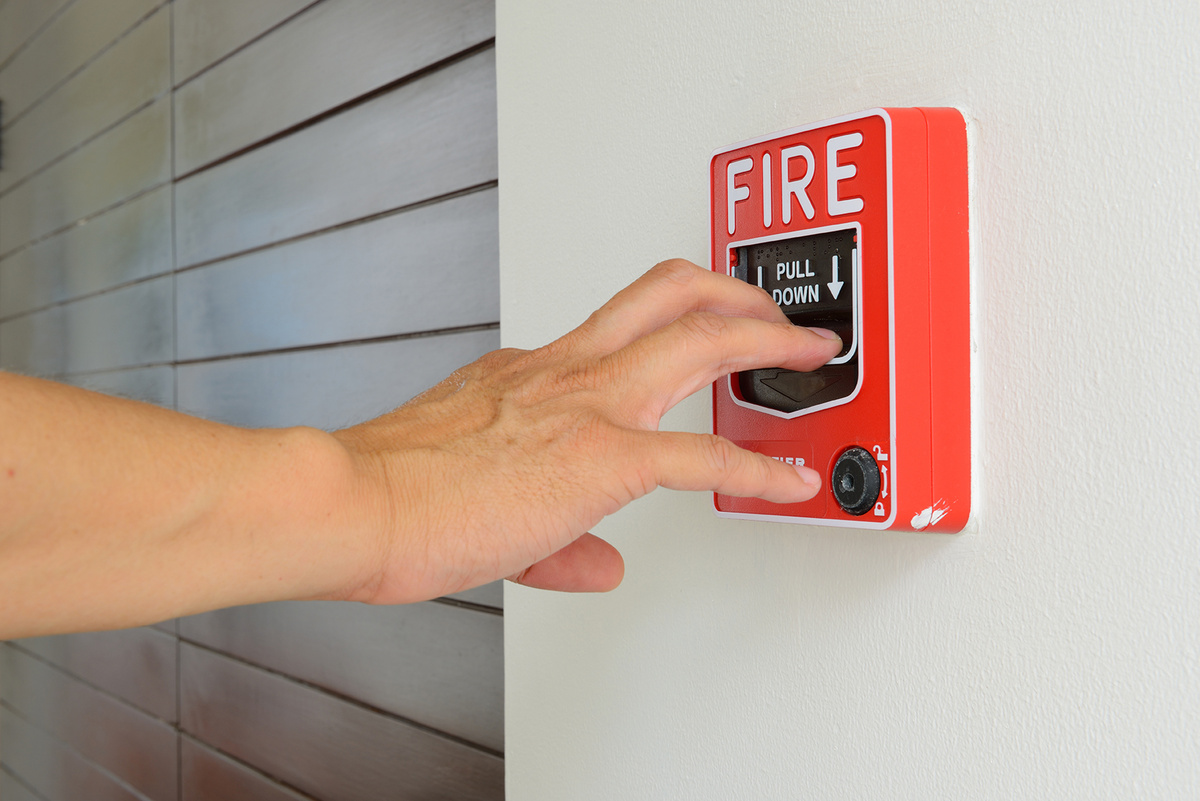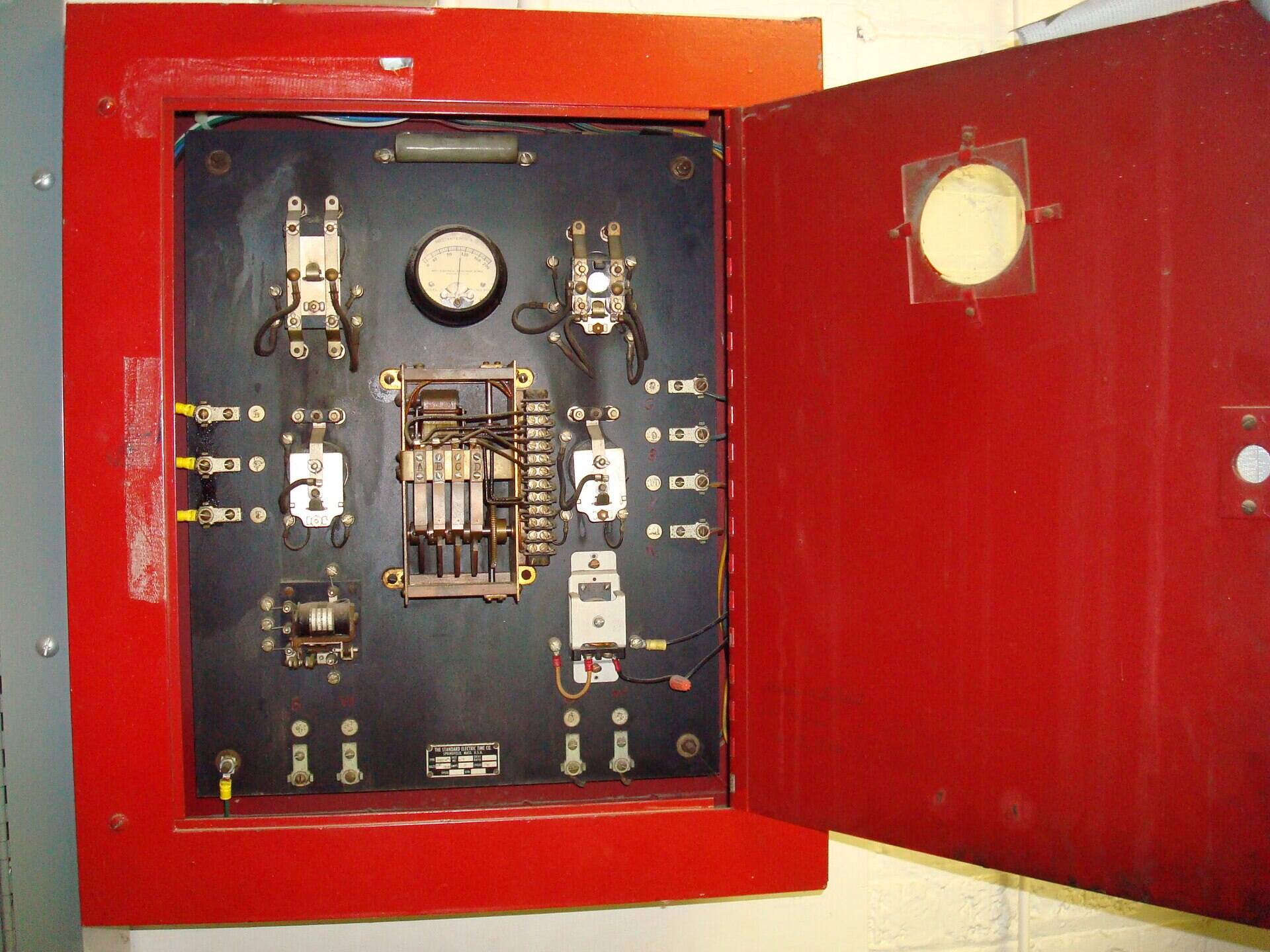Home>Home Security and Surveillance>What Is Happening With Fire Alarm Systems
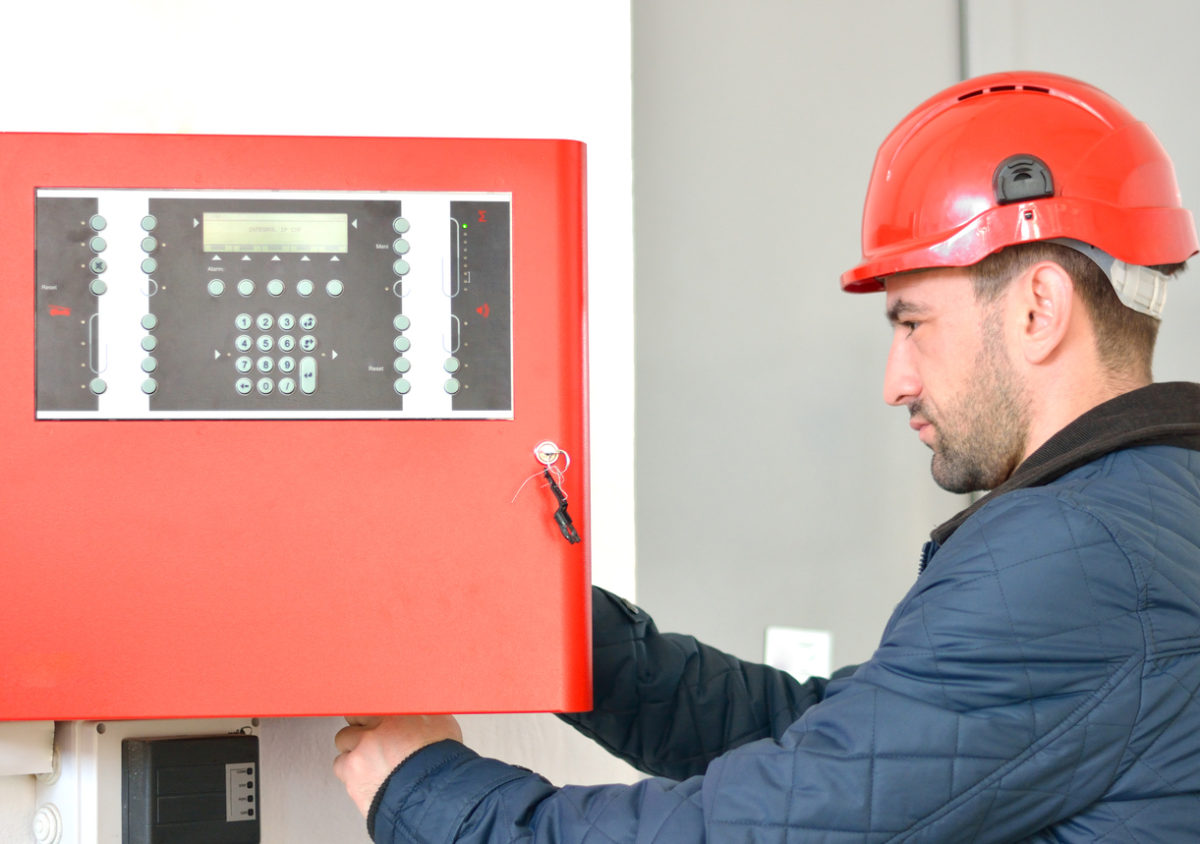

Home Security and Surveillance
What Is Happening With Fire Alarm Systems
Modified: March 6, 2024
Learn about the latest advancements in fire alarm systems and how they contribute to the overall home security and surveillance, ensuring safety and peace of mind.
(Many of the links in this article redirect to a specific reviewed product. Your purchase of these products through affiliate links helps to generate commission for Storables.com, at no extra cost. Learn more)
Introduction
Welcome to the world of fire alarm systems, an essential component of home security and surveillance. In this article, we will delve into the history, components, types, common issues, and importance of regular maintenance for fire alarm systems. We will also explore current trends in fire alarm technology, ensuring that you are up-to-date with the latest advancements that can further enhance the safety of your home.
Fire alarm systems play a crucial role in protecting lives and property by detecting and alerting occupants about the presence of fire. They act as a first line of defense, providing early warning signals, allowing individuals to evacuate and authorities to respond swiftly to the emergency. Over the years, fire alarm systems have undergone significant advancements in terms of effectiveness, reliability, and integration with other security systems.
Understanding the history of fire alarm systems helps us appreciate the progress they have made. The concept of fire detection dates back to ancient times when simple methods such as loud bells or the use of dogs were employed to raise an alarm. However, it was not until the 19th century that more sophisticated fire alarm systems began to evolve.
Early fire alarm systems consisted of manually operated devices, such as gongs and mechanical bells, strategically placed throughout a building. These devices were activated by occupants or designated personnel who noticed the presence of fire or smoke. While these systems were an improvement compared to previous methods, they heavily relied on human intervention and were prone to delays or errors.
…
Key Takeaways:
- Fire alarm systems have come a long way from ancient methods to advanced technology, ensuring early fire detection and protection for homes and businesses.
- Regular maintenance is crucial for fire alarm systems, ensuring optimal performance, reliability, and compliance with regulations, ultimately enhancing safety and peace of mind.
History of fire alarm systems
Fire alarm systems have come a long way from their humble beginnings. In ancient times, civilizations used primitive methods to detect and respond to fires. The ancient Romans, for example, had systems of hollowed-out bronze pipes built into their walls. When a fire broke out, slaves would shout into the pipes to warn others in the vicinity.
Fast forward to the 18th century, and we see the invention of the first automatic fire alarm system. Richard Newsham, an English engineer, patented a device that used a series of levers and wires to automatically sound an alarm when a fire was detected. This innovative system marked a turning point in fire safety technology.
In the 19th century, further advancements took place. Notably, the first electric fire alarm system was developed by Dr. William Channing and Moses Farmer in the United States in 1852. This system relied on electrical cables to transmit signals from the detection devices to a central control panel, where an alarm would be triggered. This technology laid the foundation for modern fire alarm systems.
As technology continued to evolve, so did fire alarm systems. The introduction of smoke detectors in the 1930s revolutionized fire detection. These devices worked by sensing smoke particles in the air and emitting a loud alarm to warn inhabitants of a potential fire.
In the latter half of the 20th century, the development of microprocessors and digital technology brought even more advancements to fire alarm systems. The introduction of addressable fire alarm systems allowed for more precise identification of the exact location of a fire or fault within a building. This increased accuracy greatly aided firefighters and emergency responders in effectively managing emergencies.
Today, fire alarm systems have reached unprecedented levels of sophistication. They incorporate cutting-edge technologies such as heat sensors, multi-sensor detectors, and advanced communication systems. These systems can not only detect fires but also monitor environmental conditions, perform self-tests, and integrate with other security systems like surveillance cameras and access control systems.
The evolution of fire alarm systems has been driven by the constant pursuit of improving fire safety and minimizing loss of life and property. As technology continues to advance, we can expect even greater innovations in fire alarm systems, ensuring that our homes and businesses are protected to the highest standards.
Components of a fire alarm system
A fire alarm system is a complex network of interconnected components that work together to detect and alert occupants about the presence of fire. Understanding the different components of a fire alarm system is crucial in ensuring its proper functioning and effectiveness. Here are the key components that make up a typical fire alarm system:
- Fire Alarm Control Panel (FACP): The FACP serves as the brain of the fire alarm system. It receives signals from various detection devices and triggers appropriate responses such as sounding alarms and alerting emergency services. The panel also provides status updates, fault indications, and manual control functions.
- Smoke Detectors: Smoke detectors are one of the most commonly used components in fire alarm systems. They are designed to detect the presence of smoke particles in the air, which are often an early indication of a fire. Smoke detectors can be ionization-based, photoelectric-based, or a combination of both technologies.
- Heat Detectors: Heat detectors are used to sense high temperatures or rapid temperature increases in the surrounding environment. Unlike smoke detectors, they do not respond to smoke particles but rather to changes in heat levels. Heat detectors are ideal for areas with high dust or smoke concentrations where smoke detectors may produce false alarms.
- Manual Call Points (MCPs): MCPs, also known as fire alarm buttons or break glass units, are devices that allow occupants to manually trigger the fire alarm system in case of an emergency. They are strategically placed throughout a building, typically near exits or fire escape routes, for easy access in case of an evacuation.
- Fire Alarm Sounders: Sounders, such as bells, horns, or sirens, are responsible for audible notification when a fire is detected. The sounders are activated by the FACP and provide a clear and distinct alert to occupants, signaling the need for immediate action.
- Visual Notification Devices: In addition to audible alerts, visual notification devices are crucial, especially in environments where occupants may have hearing impairments or are working in areas with high noise levels. These devices, such as strobe lights or flashing beacons, provide visual cues to ensure that everyone is alerted in the event of a fire.
- Monitoring System: A fire alarm system can be connected to a monitoring system that automatically notifies an off-site monitoring service or the local fire department when an alarm is triggered. This allows for a quicker response time and ensures that help is on the way as soon as a fire is detected.
These are just some of the essential components that make up a fire alarm system. It is important to note that the specific components and their configurations may vary depending on the size and complexity of the building, as well as local fire safety regulations. Regular maintenance, testing, and inspection of these components are critical to ensure the reliability and effectiveness of the fire alarm system in protecting lives and property.
Types of fire alarm systems
Fire alarm systems come in different types, each designed to suit specific needs and requirements. Understanding the different types of fire alarm systems can help you choose the right one for your home or business. Here are the most common types of fire alarm systems:
- Conventional Fire Alarm Systems: Conventional fire alarm systems are the most basic and affordable type of fire alarm system. They work by dividing a building into zones and connecting a series of detection devices, such as smoke or heat detectors, to each zone. When a detector is triggered, the corresponding zone on the control panel provides a general location of the fire. However, these systems do not provide specific information about the exact location of the fire within a zone.
- Addressable Fire Alarm Systems: Addressable fire alarm systems provide more precise information about the location of a fire or fault within a building. Each detection device in the system has a unique address, allowing the control panel to identify the specific device that has been activated. This feature simplifies troubleshooting, maintenance, and emergency response, as it provides firefighters with detailed information about the fire’s location.
- Analog-Addressable Fire Alarm Systems: Analog-addressable fire alarm systems offer advanced features compared to conventional and addressable systems. These systems continuously monitor the condition of detection devices, allowing them to detect and communicate changes in environmental conditions, such as gradually increasing smoke levels. This information can be useful in early fire detection and prevention.
- Wireless Fire Alarm Systems: Wireless fire alarm systems eliminate the need for extensive wiring by using wireless technology to connect the detection devices to the control panel. This type of system is advantageous in situations where wiring may be difficult or impractical, such as in historical buildings or during temporary events. Wireless fire alarm systems offer the same level of reliability and functionality as wired systems.
- Integrated Fire Alarm Systems: Integrated fire alarm systems combine fire detection with other security systems, such as intruder alarms, access control systems, and surveillance cameras. These systems create a comprehensive security solution, enabling seamless communication between different systems and providing a centralized control interface for monitoring and responding to emergencies.
It is important to note that the choice of fire alarm system depends on various factors, including the size and layout of the building, the level of protection required, and compliance with local fire safety regulations. Consulting with a fire safety professional can help determine the most appropriate type of fire alarm system for your specific needs.
Regardless of the type of fire alarm system you choose, regular maintenance, testing, and inspection are crucial to ensure the system’s proper functioning and early detection of fires. Regularly reviewing and updating your fire safety plan, along with training occupants on emergency procedures, further enhances the effectiveness of your fire alarm system.
Regular maintenance and testing of fire alarm systems is crucial to ensure they are functioning properly. Make sure to schedule regular inspections and address any issues promptly to keep your building safe.
Common issues with fire alarm systems
While fire alarm systems are designed to be reliable and effective, they are not immune to certain issues that can impact their performance. Understanding and addressing these common issues is essential in maintaining the functionality and integrity of your fire alarm system. Here are some of the most common issues that can occur with fire alarm systems:
- False Alarms: False alarms can be a significant concern for fire alarm systems. They can be triggered by various factors such as cooking smoke, dust, steam, or system malfunctions. False alarms not only lead to unnecessary evacuations but can also desensitize occupants to actual emergency situations. Regular maintenance, proper device placement, and sensitivity adjustments can help minimize false alarms.
- Device Malfunctions: Over time, individual components of a fire alarm system may experience malfunctions. Detection devices like smoke or heat detectors may fail to function correctly due to dust accumulation, sensor degradation, or electrical issues. Regular testing and inspection of these devices and prompt replacement of faulty components are crucial to ensure optimal performance.
- System Compatibility: Integrating different fire alarm system components or integrating a fire alarm system with other security systems can present compatibility challenges. Ensuring that all components are compatible and properly configured is essential to maintain seamless communication and functionality across the entire system.
- Poor System Design: Inadequate system design can lead to ineffective coverage or improper zoning, compromising the system’s ability to detect and respond to fires accurately. Engaging a professional fire alarm system designer or installer ensures that your system is designed correctly, considering factors such as building layout, occupancy type, and local fire safety regulations.
- Power Supply Issues: Fire alarm systems heavily rely on a reliable power supply. Power outages, faulty wiring, or inadequate battery backups can lead to system failure or compromised functionality. Regularly testing power supplies and backup systems, along with addressing any issues promptly, is vital to ensure uninterrupted system operation.
- Lack of Maintenance: Neglecting regular maintenance and inspections can result in undetected system issues or failing to identify potential problems. Routine maintenance, including cleaning, testing, and calibrating detection devices, as well as verifying the functionality of the control panel, is crucial to keep the fire alarm system in optimal condition.
Addressing and resolving these common issues requires a proactive approach to fire alarm system management. Regular testing, maintenance, and inspections, along with staying updated on industry standards and best practices, are essential to maintaining a reliable and effective fire alarm system.
Remember, ensuring the proper functionality of your fire alarm system contributes to the overall safety and protection of your home or business, providing peace of mind for both occupants and property owners.
Importance of regular maintenance
Regular maintenance is crucial for the optimal functionality and reliability of fire alarm systems. Neglecting maintenance can lead to a range of issues, including false alarms, system failures, and compromised fire detection capabilities. Here are the key reasons why regular maintenance is essential for fire alarm systems:
- System Performance: Regular maintenance ensures that all components of the fire alarm system are operating as intended. Testing and inspection of detection devices, control panels, and alarm sounders help identify any malfunctions or issues that may impact the system’s performance. By addressing these issues promptly, maintenance helps maintain the accuracy and responsiveness of the system in detecting and alerting occupants about the presence of fire.
- Reliability: A fire alarm system should be reliable, functioning flawlessly in the event of an emergency. Regular maintenance helps ensure that the system is ready to perform when needed. Testing backup power supplies, including batteries or alternative power sources, helps guarantee uninterrupted system operation, even during power outages. Reliability is crucial in minimizing false alarms, avoiding system downtime, and providing timely alerts for swift evacuation and fire suppression.
- Compliance with Regulations: Fire alarm systems are subject to various regulatory requirements and standards. Regular maintenance helps ensure that your system remains compliant with these regulations and standards. Non-compliance can result in penalties or potential liability in the event of a fire. By adhering to maintenance schedules and documentation requirements, you can demonstrate that your fire alarm system meets the necessary standards and regulations.
- Early Detection and Prevention: Fire alarm systems serve as an early warning system, providing valuable time for occupants to react and evacuate in the event of a fire. Regular maintenance plays a critical role in the system’s ability to detect fires promptly. Testing and inspection of detection devices, such as smoke or heat detectors, help ensure their sensitivity and accuracy. Early fire detection can prevent small fires from escalating, potentially saving lives and minimizing property damage.
- Long-term Cost Savings: Although regular maintenance incurs some costs, it can lead to long-term savings. Timely identification and resolution of issues through maintenance help prevent major system failures and costly repairs. Well-maintained fire alarm systems are also less prone to false alarms, avoiding unnecessary evacuations and potential disruptions to business operations. Additionally, regular maintenance extends the lifespan of the system, postponing the need for costly system replacements.
It is essential to follow the manufacturer’s guidelines and recommendations for maintenance tasks, frequencies, and documentation. Engaging qualified professionals in routine maintenance and inspections ensures that all aspects of the fire alarm system receive proper attention, and any potential issues are promptly addressed.
By prioritizing regular maintenance, you are taking proactive steps to enhance the reliability, performance, and compliance of your fire alarm system. With a well-maintained system in place, you can have confidence in the safety and security of your home or business, knowing that your fire alarm system is functioning optimally in protecting lives and property.
Current trends in fire alarm systems
The field of fire alarm systems continues to evolve with advancements in technology and a growing focus on enhancing effectiveness and efficiency. Here are some current trends shaping the landscape of fire alarm systems:
- Advanced Detection Technologies: The development of advanced detection technologies has significantly improved the accuracy and reliability of fire alarm systems. Multi-sensor detectors, which combine the capabilities of smoke, heat, and carbon monoxide sensors, offer enhanced detection capabilities and reduce false alarms. Additionally, video smoke detection has emerged as a promising technology, using video analytics and advanced algorithms to detect smoke patterns and trigger alarms in real time.
- Integration with Building Systems: Fire alarm systems are increasingly being integrated with other building systems, such as access control, CCTV, and emergency lighting. This integration allows for seamless communication and coordinated responses in the event of a fire or other emergency. By integrating systems, emergency responders can have access to real-time information about the building, enabling more effective emergency management and response.
- Mobile Monitoring and Notification: Mobile technology is playing a significant role in fire alarm systems. Mobile apps and cloud-based platforms enable remote monitoring and control of fire alarm systems. Authorized users can receive instant notifications on their smartphones or tablets in the event of an alarm or system fault. This feature empowers users to take immediate action, whether it is contacting emergency services or remotely verifying the status of the system.
- Artificial Intelligence and Machine Learning: The integration of artificial intelligence (AI) and machine learning technologies is revolutionizing fire alarm systems. AI algorithms can analyze vast amounts of data collected from the system, such as historical alarm patterns and sensor information, to improve detection accuracy and reduce false alarms. Machine learning algorithms can also adapt and learn from system behavior, identifying unusual patterns or potential system faults before they escalate into critical issues.
- Wireless and IoT Connectivity: Wireless technology and the Internet of Things (IoT) are transforming fire alarm systems. Wireless fire alarm systems eliminate the need for extensive wiring, offering flexible and cost-effective installation options. IoT connectivity allows for the seamless integration of multiple fire alarm systems across different locations, providing centralized monitoring and management. Wireless and IoT connectivity enable enhanced system flexibility, scalability, and ease of maintenance.
- Data Analytics for Maintenance and Performance Monitoring: Data analytics tools are being utilized to monitor the performance and maintenance needs of fire alarm systems. By collecting and analyzing data from various system components, data analytics can provide insights into system health, device status, and potential maintenance requirements. This proactive approach to maintenance helps prevent system faults and ensure optimal performance.
As technology continues to advance, these trends are expected to further shape the future of fire alarm systems. The integration of advanced detection technologies, mobile connectivity, AI, and IoT will continue to enhance the capabilities and reliability of fire alarm systems, enabling more effective and efficient fire protection for homes and businesses.
Staying informed about these trends and partnering with experienced fire safety professionals can ensure that your fire alarm system remains up-to-date and aligned with the latest advancements, providing you with the highest level of protection for your property and peace of mind.
Conclusion
Fire alarm systems play a vital role in protecting lives and property by providing early detection and notification of fires. Understanding the history, components, types, common issues, and the importance of regular maintenance of fire alarm systems is essential for ensuring their optimal functionality and reliability.
Over the years, fire alarm systems have evolved from simple manually-operated devices to advanced, interconnected systems that integrate with other building systems. The introduction of advanced detection technologies, integration with building systems, mobile monitoring, and the use of artificial intelligence and machine learning have significantly enhanced the capabilities of fire alarm systems.
Regular maintenance is crucial to ensure the proper functioning of fire alarm systems. Maintenance helps identify and address issues such as false alarms, device malfunctions, compatibility challenges, poor system design, power supply problems, and lack of maintenance. By conducting regular inspections, testing, and adherence to manufacturer guidelines, the reliability, performance, and compliance of fire alarm systems can be enhanced.
Additionally, staying informed about current trends in fire alarm systems, such as advanced detection technologies, integration with building systems, mobile monitoring, and the use of artificial intelligence and IoT, can help individuals and businesses make informed decisions to improve their fire safety measures.
In conclusion, fire alarm systems are a critical component of home security and surveillance. They provide early detection and notification of fires, giving occupants the precious time needed to evacuate and authorities the opportunity to respond swiftly. By understanding the history, components, types, common issues, and the significance of regular maintenance, individuals and businesses can ensure the optimal performance and reliability of their fire alarm systems, contributing to the overall safety and protection of lives and property.
Frequently Asked Questions about What Is Happening With Fire Alarm Systems
Was this page helpful?
At Storables.com, we guarantee accurate and reliable information. Our content, validated by Expert Board Contributors, is crafted following stringent Editorial Policies. We're committed to providing you with well-researched, expert-backed insights for all your informational needs.
